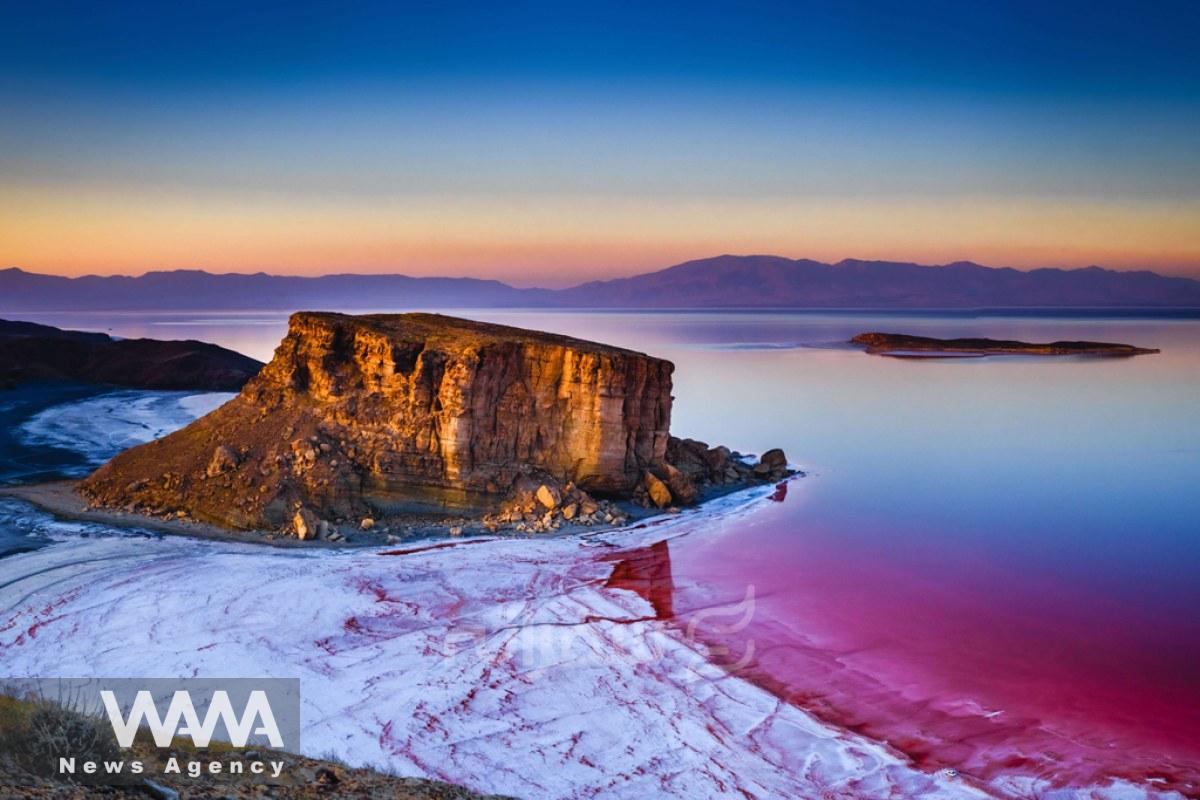NASA Releases Image of Lake Urmia Showing Changes
WANA (Aug 24) – NASA recently released an image of Lake Urmia, captured on August 2nd. In its description, NASA noted that the salty, red waters of Lake Urmia were photographed from the International Space Station at an altitude of 260 miles (418 kilometers).
The agency explained that over the past few decades, the shrinking of the lake has increased the salt concentration in the water, leading microorganisms to turn the water red and orange.
According to NASA, Lake Urmia, similar to Uzbekistan’s Aral Sea, has rapidly shrunk in recent decades. As the lake decreases in size, its salinity rises, causing microscopic organisms to periodically change the water’s color from blue to red and orange.
These color changes in Lake Urmia are common during spring and early summer due to seasonal rainfall and weather patterns. Spring is the wettest season in northwestern Iran, with precipitation typically peaking in April. Snowmelt from nearby mountains also contributes to the lake’s water levels during this time.
A combination of rainfall and snowmelt sends a surge of freshwater into Lake Urmia in April and May. However, by July, the inflow of freshwater decreases, and the lake’s water levels begin to drop.
READ MORE
Lake Urmia, located in northwestern Iran, straddles the provinces of West Azerbaijan and East Azerbaijan. It is one of the largest saltwater lakes in the world and serves as a crucial natural and environmental resource for the country. In recent years, Lake Urmia has faced significant environmental challenges due to severe water level reduction and increased salinity. These changes have raised serious concerns about the lake’s future and its ecological impact on the region.

Lake Urmia, located in northwestern Iran/Social media/ WANA News Agency












